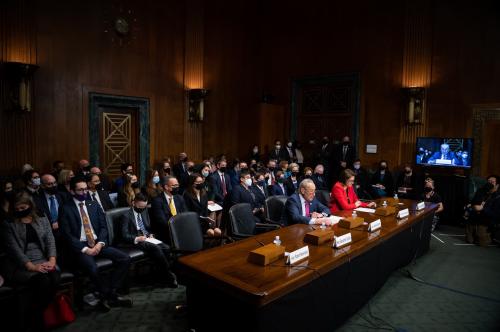Executive Summary
Cities are creations of their states. Their boundaries, their powers, and their responsibilities are all substantially prescribed by state law. With the advent of the new federalism—beginning in the 1970s and resurgent today—the devolution of power from Washington to state capitals has increased the importance of state decision making for cities.
Yet, this shift occurred precisely as cities were losing political clout in state legislatures due to population decline within city limits and rampant growth in suburban jurisdictions.
This paper argues that in response to shifting population distributions within states, cities need to build new coalitions to effectively achieve their legislative goals within state legislatures. Case studies—New York City, Chicago, Detroit, and the three largest cities in Ohio (Cincinnati, Cleveland, and Columbus)—are used to more closely examine coalition-building methods.
Overall, the authors find:
- Cities’ dependence on state government has increased as the federal government has ceded more power to the states. As cities’ populations have declined, they have become weaker in state legislatures that have grown more powerful due to federal policy. In the peak year of 1978, about 15 percent of city revenues came from the federal government. By 1999 that had decreased to 3 percent. Concurrently, the federal government has shifted a number of programs to the states, which control the rules and revenue mechanisms cities operate under.
- Traditional political coalitions cities have used to achieve their state legislative goals are no longer as effective. Partisan (usually Democratic) coalitions are less reliable as focus has shifted to suburban swing districts. Moreover, as their power has decreased, cities’ agendas have become more reactive, aiming to preserve the status quo in funding, infrastructure projects, and autonomy.
- Older, inner-ring suburbs are a logical new partner for cities in state legislatures. Increasingly, these suburbs, and some outer ones, have common interests with central cities as they address immigration, fiscal stress, and infrastructure woes. Such alliances would also better address metropolitan-wide issues on a metropolitan basis.
There remain many obstacles to forging such coalitions, however, including longtime distrust among big cities and their neighbors, racial disparities, and in some cases, growing investment in central cities while surrounding suburbs languish. Nonetheless, for cities to effectively influence their state governments more creative approaches to coalition building must be found.


